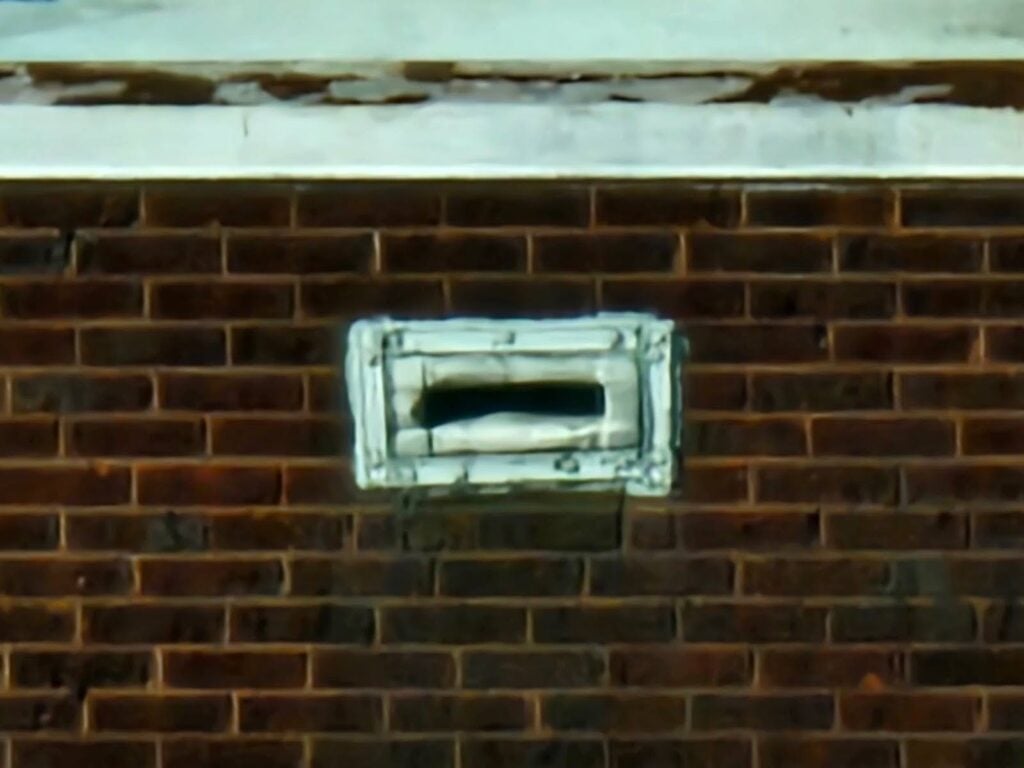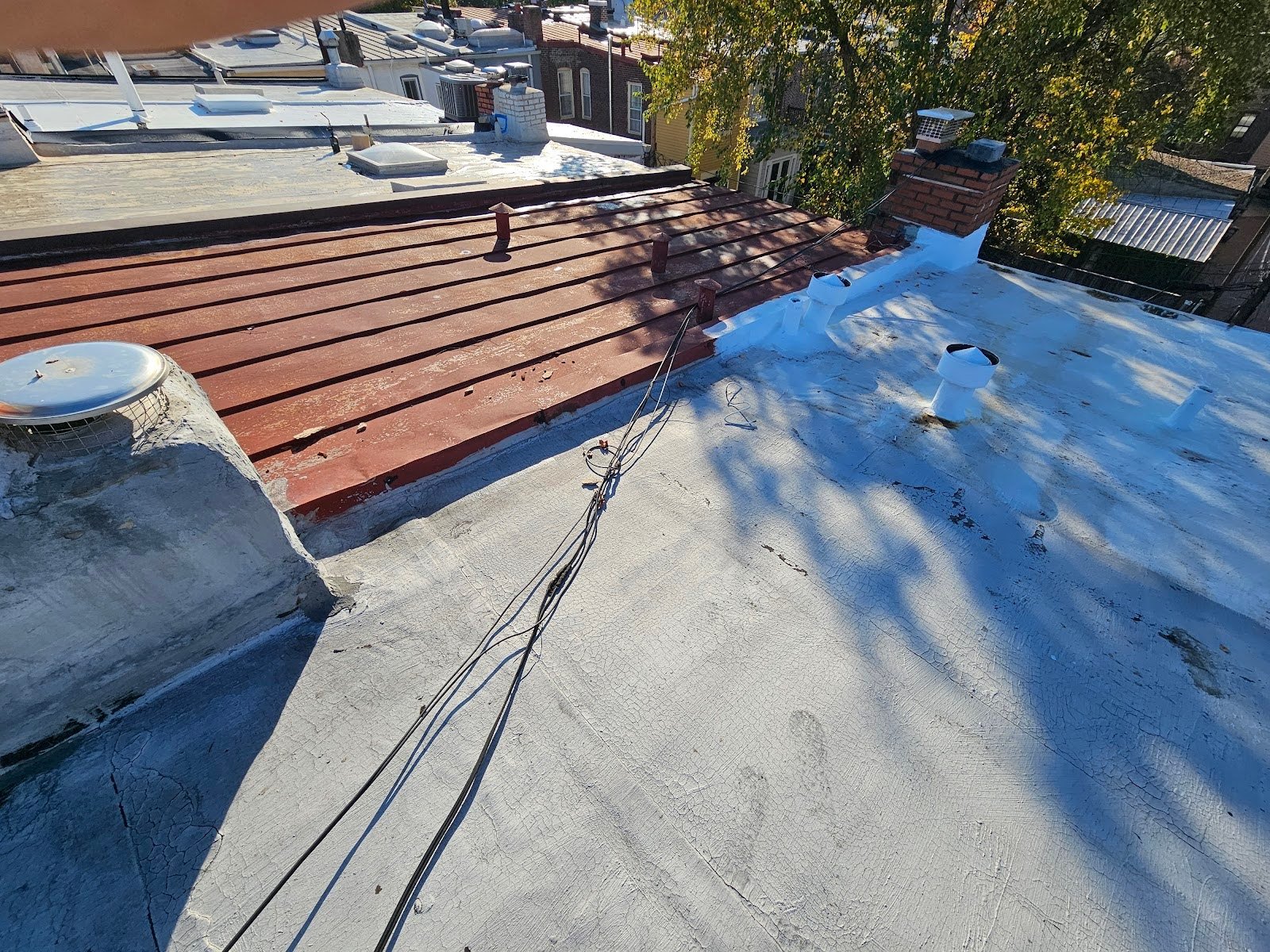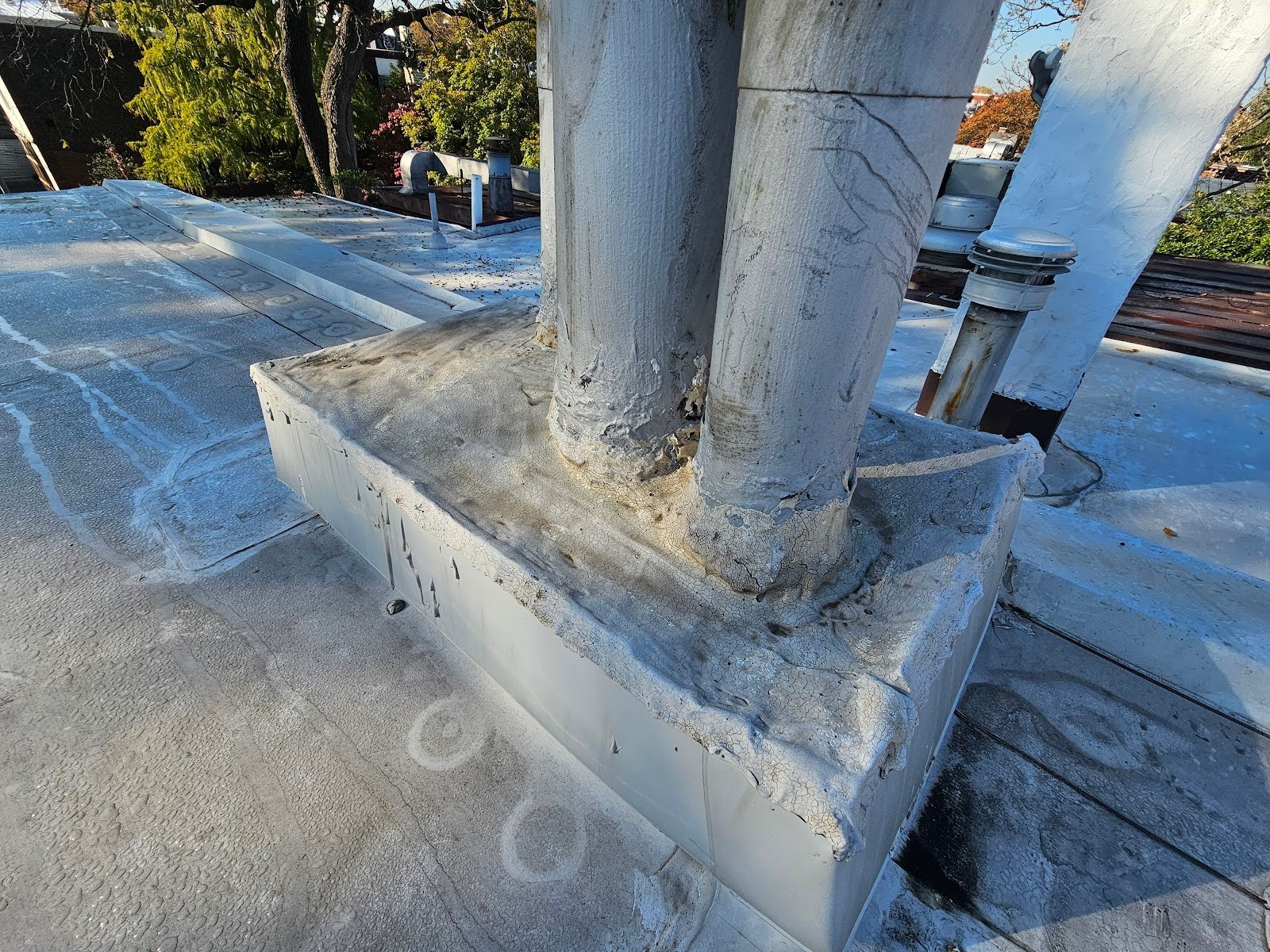Ongoing Issues with Clogged Roof Drains
This past week, we looked at a low slope roof with a relatively wide layout. The particular building footprint is both long and wide. That type of layout generally works better with internal drains then a typical rear termination. Generally, the roof tends to drain just in one direction, in cases without an internal drain. Essentially, the framing has a lower net slope, overall with an internal drain.
With an internal drain, you don’t necessarily have to have as much overall net difference between the highest points and the lowest points of the roof. With internal drains though, there’s still complications of the framing because the grade has to change in multiple directions. So it’s easier in one way, but it’s actually more complicated in another way. It doesn’t necessarily mean that it’s better or worse from a framing perspective.
You can see a relative to close view of this scupper in the picture below. The scupper basically works like a hole in the side of the parapet that allows water to flow from the roof outwards. It may be set a few inches above the actual low slope roof surface. Nonetheless, it works as an emergency overflow when or if the water were to build up in a clogged drain type scenario.
In a scenario like that, where the scupper were to be engaged, water would flow through the scupper. Water would then, from there, run down the wall of the building. That’s also not an ideal situation. Downspouts and collection boxes can also be installed at scuppers, but you really only find those types of installations when the scupper is intended to be used to drain water on a more frequent basis, not just for emergencies.

However, internal drains can be more complicated because overall they are much smaller and provide a lower amount of area to deal with potentials of backup and clogging related to debris and or treat type materials that often clog drains and cause roof blockages. Last week, we showed the internal drain at this roof and the ponding area of water around that drain which was clogging the roof drain and stopping it from flowing properly.
When a drain like that is significantly clogged, as water builds up, particularly during heavy rains, the water will form into a giant puddle that we refer to as ponding. That a massive amount of water can be very heavy. Water weighs over seven or eight pounds per gallon. When an internal drain is completely clogged and a roof builds up with a foot of water in an area over a thousand square feet, that amounts to over 7,000 gallons of water. This amount of water, for example, will weigh over 60,000 pounds!
We did a little bit of research just to check our mathematics and learn that the weight of water actually changes depending on the temperature. That’s interesting, but it makes intuitive sense if you think about it from a scientific perspective. Molecules and matter expands, to a degree when it is heated. We see this in many different roofing issues because dissimilar materials will often separate because of micromovements with temperature fluctuations. We talk about that a lot here on our blog because it’s one of the types of deterioration or damage that needs routine upkeeping maintenance on roofing systems.
Like most other types of roof systems, this particular roof layout also has other items found on low slope systems. The picture below shows a curb that may have been used for a skylight or an access panel in the past where the membrane rises or changes in planar direction, flashing is needed to span and wrap around the curb. The curb is the part of the roof that extends upwards from the horizontal plane.
The flashing at that area needs to be overlapped because as you change direction, the material isn’t stretchy enough to also change direction without seams and overlays. Because of those seams and overlays, the way you would overlap pieces of paper in a gift wrapping type configuration, those elements need special attention because they need to be sealed properly. They’re not just additional overlaps, but also overlaps that don’t run perpendicularly to the flow of water. In some cases they run parallel to the flow of water and those types of overlaps are generally more problematic. It’s just important that the work to install that flashing is done with proper techniques and quality control.

The next picture below shows areas of improper back grading, a plumbing vent penetration, and an exhaust duct penetration through the roof system.

The next picture below shows another pipe penetration, but here there is a back grading that also leads to ponding, like the area shown in the picture below. Here though, we believe it’s a deeper area of ponding because of the darker color of debris left where water accumulates. Essentially, as water runs across a rooftop, the surface washes the debris into the water and then later deposits that dirt and debris where it accumulates and stops running.
This is just like a stream or river. A river might wash away sediment but where the river or stream pools, the water slows down and almost can come to a stop. During or at areas like that the debris that is washed away will settle towards the bottom. Here, on a roof, they don’t just settle, they also dry up at times when the rain and precipitation stops. The dark dirt area left behind is a clear indication that it’s a suppressed or lower area of the rooftop.

In last week’s blog, we showed a wide-angle view of the parapet around three of the four sides of this rooftop. We didn’t look very closely at the parapet coping though and last week’s discussion, here though in the picture below you can see that that ferrous metal coping is significantly rusted. We’ll talk more about these topics in future blogs as well.

We provide this information here on our blog, and our website, to help our customers and future clients, and we recommend every building owner in DC who values the longevity of their roof (and their investments) and building use a contractor who values the simple and important principles of proper roof construction like Dupont Roofing DC. Our company specializes in flat roofing here in Washington DC and we’re happy to help building owners of almost all types.
Learn more about our company and the proper techniques of working with roofing on historic buildings in Washington DC here on our blog at DupontRoofingDC.com, and you can call us at (202) 840-8698 and email us at dupontroofingdc@gmail.com. We are happy to help and at least talk through options.




